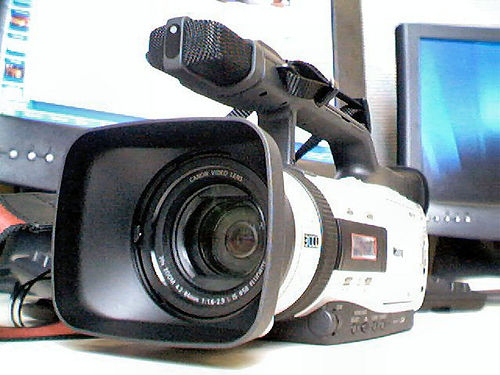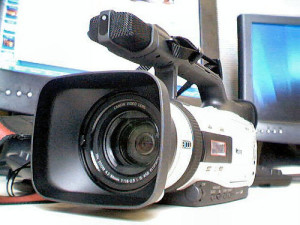
We live in a media-saturated age in which we are almost constantly surrounded by images and sound created to capture our attention. Within this crowded media landscape, documentaries about health are capturing more and more attention from a wider audience.
Documentaries are important for how they shape our thinking about health, illness and our bodies. One of the classics of documentary filmmaking is Frederick Wiseman’s Titicut Follies (1967) in which he recorded life inside the Bridgewater (Massachusetts) State Prison for the Criminally Insane. Wiseman’s film documents the various ways the inmates are treated by the guards, social workers and psychiatrists. Tied up for years in legal battles with the State of Massachusets, the film is now widely available.
Much has changed in the 40+ years since Titicut Follies appeared.
The shift from more expensive analog celluloid (film) to digital (video cameras and digital editing) has meant an unprecedented burgeoning in documentaries. Now, there are simply more documentaries being created than at any other time. This means that there are many more documentaries, both in theaters and on the television, for viewers to choose as part of their media diet. And, documentaries about diet can sometimes prove economically and critically successful. For example, Morgan Spurlock’s Supersize Me (2004) grossed over $11 million dollars (in the first year alone) and was nominated for an Academy Award.
The shift from film to digital video has also meant that there are many more documentaries about health on television as well. Most recently, for example, the American cable television network HBO launched a documentary series called “Addiction,” funded by the National Institutes of Health (NIH) and National Institute of Drug Addiction (NIDA), which presents a strong and unequivocal message that drug addiction is “a brain disease” (HBO, 2007). In the very near future, media mogul Oprah is set to launch her network of documentary films, OWN, that may just prove to be another game-changer in the distribution of docs.
At the same time as the shift from film to digital video, there’s been another important transformation: the rise of the Internet. The pervasiveness of Internet technologies means that increasingly when we look for “information” we start with search engine rather than with a trip to the library. Digital videos, often documentaries, are often what we stumble upon when we search for information.
Changes in traditional distribution networks for films have also expanded the audiences that see documentaries. The conventional distribution networks, such as chain video stores and cable television channels, often made it difficult to find documentaries to watch. With the seismic shifts in distribution wrought by what Anderson calls “the long tail” documentaries that might draw a smaller audience can still be successfully distributed through online video outlets such as Netflix.
All of these changes together mean that we’re living in a kind of golden era of documentaries. Many of these documentaries, like Supersize Me, Food Inc,., and The Cove, deal with important health-related issues. Today, there are simply more documentary films in existence than ever before due to the rise in the independent and documentary film industry, the widespread use of digital video cameras by the general public, and the rise of documentary films in television. And, because of vastly diversified distribution networks, many of these documentaries are now widely available at relatively low cost. In addition, literally millions of short documentary films and clips from longer documentaries are available at no cost through online video portals, such as YouTube.com.
Those of us who are concerned about the public’s health, and want to affect public policy in ways that can improve health, should figure out how to make the most of this golden age of documentaries.
For titles of health-related and social issue documentaries, see this list compiled by the author.
Jessie Daniels, Senior Fellow, The Center for Health, Media and Policy, Associate Professor, Hunter College










Pingback: Golden Age of Documentaries is Now: New Technology & Distribution … | catch-22entertainmentguide.com / November 18, 2010
/
my women's health blog / November 18, 2010
Just wanted to thank you for this great article; this is the thing that keeps me encouraged through my day. I have been searching around for these posts under recommendation from a colleague and was pleased after I found it after searching for a while. Obviously, being a blogger myself, I’m glad to see others taking initiative and contributing to the community. Just wanted to show my gratitude for your work as it’s very encouraging, and many writers don’t get the recognition they deserve. I know I’ll come back to read more and will refer some of my friends here.
/
Steve Gorelick / November 18, 2010
Jessie: This is a remarkable list and great resource. As I scrolled through, and saw just how complete it was, I got more and more excited about the prospect of having it at my side for all sorts of planning, teaching, and – truth be told — making Netflix choices. I hope many people peruse it. It is not only comprehensive, but a real testament to the quality and breadth of your superb taste and acquaintance with docs.
One film not listed came to mind that I have been thinking about lately – Frederick Wiseman’s monumental 6 hour doc “Near Death.” (1989) It immerses us in the lives (and deaths) of a group of patients with Chronic Obstructive Pulmonary Disease at Boston’s Beth Israel’s hospital. It is a really intense look at people making excruciatingly difficult decisions. I am at this moment living this out with the mother of one of my best friends, a woman who has very much become part of my close, extended family. It is also fascinating to see Wiseman take this on in the pre-reality TV era, before ER and medical reality shows hyper-energized intensive care and put it on dramatic steroids. The decisions in Wiseman’s film are made in long, agonizing, even wordless stretches as physicians and family simply look back and forth at each other, speaking the silent language of powerlessness, and trying to think what to say at moments in which there is really very little at all to say. http://www.zipporah.com/films/11
The other film is Reckless Indifference by William Gazecki 2000). It tells the story of Brandon Hein, a young California man sentenced to life without parole (under the so-called felony murder rule) for being present during an accidental killing in which he had no direct role. No film has ever so completely stirred me to action and I have been involved for several years with Brandon’s family seeking his release. I think you’d love it. It’s what happens when the justice system takes on a momentum that is seemingly unstoppable and irreversible. Of course, it is reversible, but powerful institutions seem to love to imply unstoppability, suggesting that they have no agency and that they cannot right a wrong. http://www.recklessindifference.com/
Finally, there is one that I am wondering if you omitted because you had problems with it. I saw it recently and as I watched it I knew that I desperately wanted your take, both visceral and everything other type of take. Have you seen Kimberly Reed’s Prodigal Sons? (2008) to even describe it would be to spoil it. But I am really in need of other people’s reactions about this film dealing with gender, mental illness, and family strife. Given that the residue of pain and emotion with which I was left has – for the moment – deadened my critical faculties. I thought it was a stunning accomplishment. http://www.prodigalsonsfilm.com/drupal/
And other other pair of my my favorite early PBS films:
http://mediaandmayhem.com/2008/06/22/the-night-in-1968-i-was-born-public-broadcast-laboratorys-birth-and-death/
Thanks so much for the work you put into the list. It is really an incredible contribution. And, as someone with similar tastes and interests, I can’t resist ending with an absolutely serious question: Could you recommend a film or two dealing with health issues in which – through activism, taking on institutions, or sheer, unstoppable and joyful, energy — someone faces a challenge and prevails.
I need to be immersed in the story of someone who prevails. I know how we can be caught in web of powerful institutions and battered by sheer randomness. But I’d love to watch some films where people defy that tangled web, even when they can’t (as none of us can) defy the randomness.
/
Pingback: Prepaid Distribution Opportunities | mikrotips.com / November 28, 2010
/